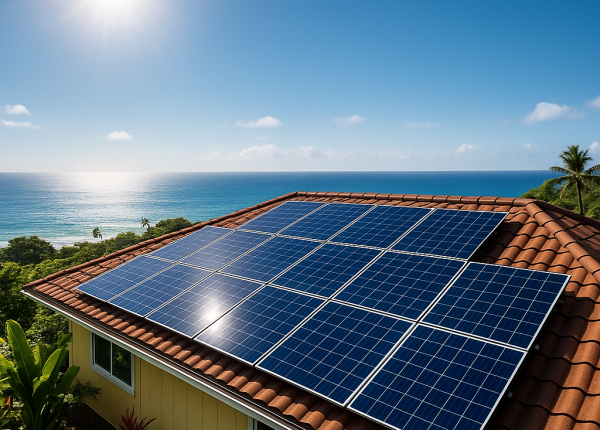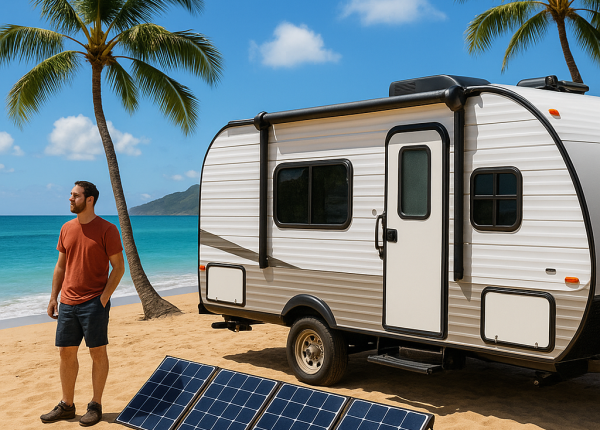Types of Solar Systems Explained
Types of Solar Systems Explained
A Clear Guide to Choosing the Right Solar System in Hawaii
If you’re weighing the main types of solar systems for a home or business in Hawaii, this guide is for you. The islands’ high electricity rates and abundant sunshine make solar power an attractive choice, but the right system depends on your goals: maximum savings, backup reliability, or full independence. Below we break each option down clearly so you can pick the best fit for your property and budget.
Understanding the Core Solar System Options
Before you choose, it helps to know how different solar energy systems operate and why those differences matter. All solar systems start with solar panels that capture sunlight, but where that electricity goes and how it’s stored is what defines each system type.
Key benefits of understanding the options include preventing costly design mistakes, matching system performance to lifestyle needs, and ensuring longevity and return on investment. Read on to learn how grid-tied, off-grid, and hybrid systems differ and which situations favor each choice.
Types of Solar Systems and How They Work
Grid-Tied Systems: Cost-Effective and Simple
Grid-tied systems, often called on-grid systems, connect your solar panels directly to the utility grid. These systems prioritize using solar power when it’s available and drawing from the grid when it’s not. Because they don’t require large battery banks, grid-tied setups are usually the most affordable option up front.
Net metering programs let you export excess energy to the utility and receive offsets on your bill, which is why many Hawaii homeowners choose grid-tied systems to reduce electricity costs. For photovoltaic equipment typically used, check an example of photovoltaic product offerings.
Off-Grid Systems: Total Independence
Off-grid solar systems in Hawaii provide full autonomy from the utility. These systems rely on solar panels, a properly sized battery bank, and sometimes a generator for extended low-sun periods. Off-grid designs require careful load calculations and significant storage to ensure continuous power day and night.
Off-grid is ideal for remote properties or anyone prioritizing independence over cost.
Hybrid Systems: The Best of Both Worlds
Hybrid systems combine solar panels, battery storage, and a grid connection. They let you use solar power and save surplus energy in batteries, while the grid remains available for additional needs. During outages, hybrid systems can seamlessly switch to battery power for essential loads.
For more on storage components that pair with hybrids, see PV storage solutions.
The Technology Behind the Systems
How Do Solar Panels Work?
Solar panels are made of photovoltaic cells that absorb photons and release electrons, producing direct current electricity. An inverter converts that DC into alternating current suitable for home use. For a deeper technical understanding, see Energy.gov.
Batteries and Energy Management
A Hawaii solar battery stores electricity for use when the sun isn’t shining. Batteries differ by chemistry, cycle life, and depth of discharge. For practical install options and integration with HVAC or EV charging, explore energy-efficient components and EV charging solutions.
Real-World Applications and Use Cases
Residential Solar Systems in Hawaii
Most residential systems are grid-tied or hybrid. Grid-tied maximizes financial return through credits, while hybrid adds resilience with battery backup. For rooftop integration with durable materials, see roofing products for solar-ready installation.
Off-Grid in Remote Locations
Properties without practical grid access—or homeowners who want full autonomy—install off-grid systems. These require larger battery banks, generator backup, and energy-efficient appliances.
Commercial and Specialty Systems
Businesses often choose grid-tied arrays for daytime load offset, and commercial installations sometimes include battery storage for demand charge management or critical-load backup. For water heating integration, see solar water heater Hawaii options.
Best Practices When Choosing Your System
Evaluate Your Energy Usage Honestly
Start with a year of utility bills to see daily and seasonal patterns. Homes with high evening usage often benefit from battery storage.
Inspect Site Conditions
Roof orientation, angle, and shading affect output. A professional site assessment ensures the best panel placement.
Prioritize Quality Equipment and Installation
Choose reputable solar panels and certified installers. For additional system support, explore electrical services and EV-ready solutions.
Consider Future Needs
Plan for electric vehicle charging or increased household loads to avoid costly retrofits.
Final Thoughts: Pick the System That Matches Your Goals
The right solar system in Hawaii can deliver meaningful savings, increased independence, and reduced carbon footprint. Whether you pick grid-tied, off-grid, or hybrid, invest in proper design and quality components.
Compare local product choices for photovoltaics and storage solutions to find the best fit.
Frequently Asked Questions
What are the main types of solar systems?
Grid-tied, off-grid, and hybrid systems. Grid-tied connects to the utility, off-grid operates independently, and hybrids combine both for flexibility and backup.
Which solar system is best for Hawaii homes?
Most homeowners choose grid-tied or hybrid. Grid-tied maximizes savings; hybrid provides backup power and resilience.
Can solar systems work during outages?
Grid-tied typically shuts down during outages. Hybrid and off-grid systems with batteries can provide power during grid failures.
How long do solar batteries last?
Battery life varies but generally ranges from 8 to 15 years. Proper installation and management maximize lifespan.
Are solar water heaters a good complement to PV?
Yes. Combining solar water heater Hawaii solutions with PV reduces household energy demand and improves efficiency.


